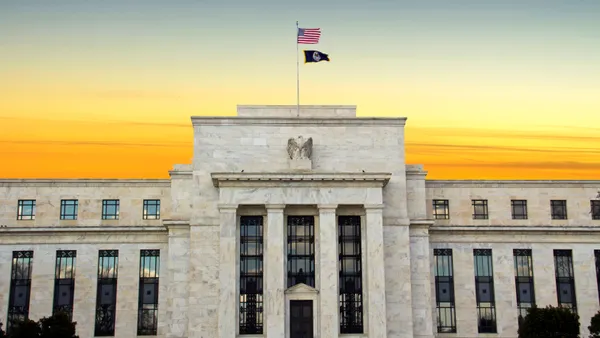With technology and customer requirements constantly and rapidly evolving, financial institutions face a common set of challenges: how to best secure people, data and things—all while creating seamless experiences. Customers not only want but expect instant access to banking services—from anywhere, on any device—creating an evolving set of security threats. In addition, banks need to ensure they balance their digital offerings with safe, quality, in-person banking services.
Modern technology, including environmental sensors and cloud-managed smart cameras, provides innovative solutions and in fact has never been more important for banking institutions. This applies across the industry, from the smallest credit union to the largest global financial conglomerate.
Keeping up with the flux
So how does a bank keep up with the latest security technologies and solutions?
Here are five ways you can keep your customers and their data safe and secure, no matter where and when they use your services.
1. Protect your infrastructure to better your customer experiences.
Customers expect a lot from their banking institutions. They demand reliability and speedy service, both of which can be at risk when hardware, networking, or applications are not protected.
Compromised back-of-house technology, for instance, can result in serious downtime for customers, as was nearly the case for the team at CAMPUS USA Credit Union when their HVAC was shut off in one of the facilities without their knowledge. Thankfully, they had installed temperature sensors which quickly alerted them to the issue. Had an alert not been received, the equipment could have overheated and cost the team over $60,000 worth of hardware and created hours, if not days, of downtime for their customers.
2. Ensure a secure approach to open banking and open finance.
It’s important to weigh the advantages of open banking against the need for securing data.
Approaches like authorization, authentication and encryption are as important as ever—but APIs must also be secure, especially given the vital role they play in finance. By adopting a holistic, 360-degree approach, you are more able to ensure data integrity. This gives you a greater sense of ease that a data breach won’t affect customer-facing or internal processes.
3. Activate anti-money-laundering efforts with smart cameras.
Global banks were fined over $10 billion in 2020 for violations of anti-money-laundering policies, an increase of more than 80% from 2019, according to a report by The Economist. With the combination of video and transaction analysis, you can better identify unusual transactions and patterns that could indicate money laundering.
By leveraging built-in computer vision, smart cameras simplify capturing and analyzing video for motion and objects like people. Banks then have more visibility when customers deposit, withdraw or transfer large amounts of money.
4. Provide always-on protection with SASE.
Financial institutions have a responsibility to protect customer data against cyberattacks. With over 1,400 cyberattacks in the U.S. over the past year and 164.6 million successful data breaches, the need for data protection continues to grow.
SASE (secure access service edge) solutions provide always-on protection so you can ensure the safety of network traffic to and from branches to protect sensitive data. With SASE, banks are empowered to transform security and networking, enable access from anywhere and keep data secure.
5. Modernize your on-site security strategy with cloud-managed smart cameras.
Long gone are the days of manually turning your surveillance cameras on and off. With cloud-managed smart cameras, you can not only automate at scale, but also access insights from anywhere to best protect your spaces and people.
Traffic analytics and occupancy tracking help ensure a safe in-person banking experience and assist with security personnel scheduling. The “access from anywhere” nature of cloud-managed cameras provides full-scale visibility remotely.
Bank on a unified security approach
Taking on innovative technology to enhance your financial organization’s security doesn’t need to be daunting. By unifying your cybersecurity and physical security through the cloud, you not only simplify your processes, you make them more effective and improve your customers’ and employees’ experiences. That’s something you can bank on.
Learn more about the benefits of upgrading your technology at your banks and financial institutions.










